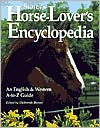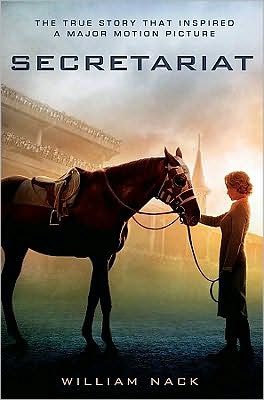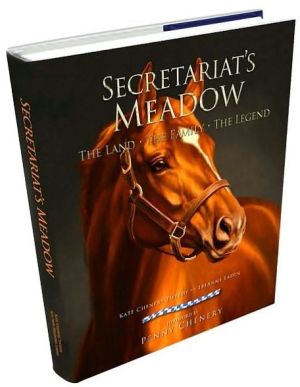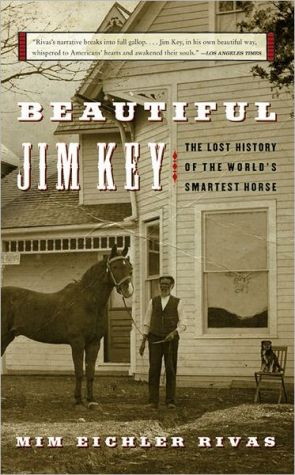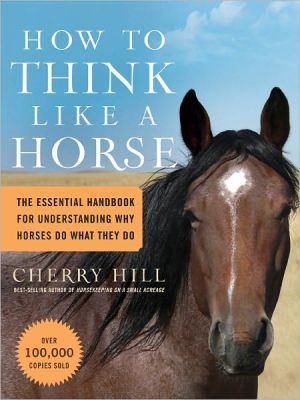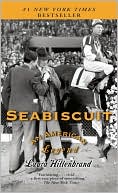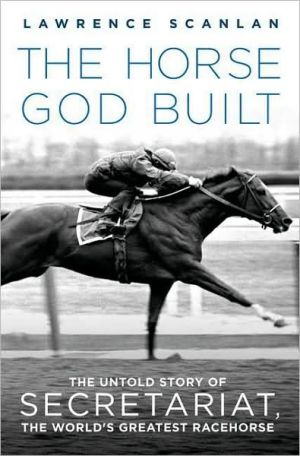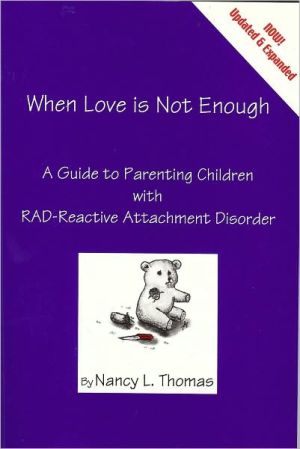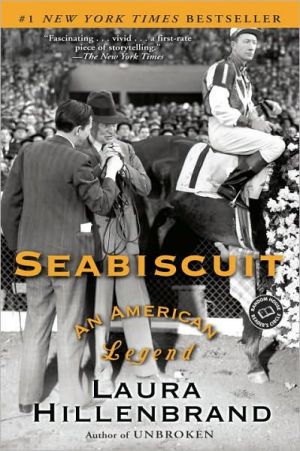Storey's Horse-Lover's Encyclopedia: An English and Western A-to-Z Guide
The horse world has many different "arenas," and even many professionals don't know the terms used outside their areas of expertise. Here, finally in one place, is a complete guide to everything horse-related - a guide that will be equally useful to a seasoned professional, a novice equestrian, and someone who just wants to know everything there is to know about horses.\ This hefty, fully illustrated, A-to-Z compendium is an indispensable answer book addressing every question a reader might...
Search in google:
Your information lifeline in the barn! The equestrian world is vast and complex, but horses and horse care are the same the world over. This volume celebrates the many different equestrian philosophies and presents detailed information on all styles of breeds, healthy horse care, and stable lore. This unique, user-friendly A-to-Z guide to the horse world is broad in scope, rich in content, and fully cross-referenced. Packed with illustrations, charts, quotations, tips, and insights, Storey's Horse-Lover's Encyclopedia has the information you need - whether you're a seasoned professional, a novice equestrian, or someone who just wants to know everything there is to know about horses. From fetlock to Forelock, gaits to gates, reining to rain scald, it's all here in this treasury of everything equestrian. Library Journal Edited by a horsewoman with several other equine books to her credit, this comprehensive volume for horse enthusiasts might better be called an encyclopedic dictionary. The alphabetically arranged entries vary in length from a few sentences to a few pages, with the most thorough coverage going to extensive topics like breeding, foot care, and feeding. Most entries consist of one or two paragraphs and provide a good definition of the term at hand. The book is well illustrated with sketches and is especially easy to use. Where a more visual presentation is appropriate, tables and charts are given, which is particularly helpful when alternatives are offered for comparison. Cross references are used effectively, and sidebars containing illustrations and bits of equine folklore give the book a user-friendly appearance. Finally, the book is well indexed and includes a helpful list of resource organizations. Recommended for library reference collections; horse owners will probably want to purchase their own copies. Deborah Emerson, Rochester Regional Lib. Council, Fairport, NY Copyright 2001 Cahners Business Information.
ENTRIES FROM PART OF SECTION "A"\ AAEP -\ • See American Association of Equine Practitioners\ Abrasion - An irritated, rough, or worn away area of the skin.\ Abscess - An inflammation surrounding a concentration of pus. An abscess can occur in various parts of the horse's body, but is most common in the hoof.\ • See Hoof\ Acetylpromazine maleate (Acepromazine) - A tranquilizer that is injected into a horse's muscle and is sometimes used before stressful situations such as transportation by trailer; often called ace. Sometimes an unethical dealer might give a horse ace to make him appear well-mannered and calm. A veterinarian should always administer this medication, because different horses respond very differently. Generally, the product takes effect in less than half an hour and lasts a few hours. Never use ace on an excited horse, since it may make him more upset.\ Action - How a horse moves. Conformation classes evaluate action at the walk and trot, as well as overall body structure. In performance classes a horse's action is judged as a key ingredient of quality, performance, and brilliance. Judges look for straightness, easy landing of hooves, length of stride, and flexion and raising of knees and hocks.\ Different breeds emphasize different types of action. For example, American Saddlebred horses should exhibit sparkling, animated action. Dressage horses, on the other hand, are valued for relaxed, supple, balanced, light, and precise movement. Western Pleasure horses should move in a natural, relaxed, easy, comfortable style.\ • See also individual breeds\ Acupuncture - An ancient Chinese healing art, an alternative therapy used to treat horse health problems from arthritis to heaves to colic. It is considered beneficial when treating painful or chronic conditions that have not responded to standard medications. The treatment, administered by a licensed practitioner, consists of applying a thin needle or pressure to certain external points on the body in order to stimulate the flow of energy or release blocked energy. In addition to needles, weak electric currents, cold lasers, and ultrasound may be used. A veterinarian may combine acupuncture with traditional medicine to maximize benefits to the horse.\ Acupressure uses acupuncture points to achieve these metabolic "connections," but instead of inserting needles, pressure is applied to the skin above the relevant acupuncture points.\ Acute - A description of a condition that comes on suddenly and worsens rapidly. Essentially, any sudden onset of illness is in the acute stage when it first appears. It does not become chronic until it stabilizes and proves that it is a condition that will either remain an issue for the horse on a daily basis, or will recur with varying frequency.\ Acute laminitis -\ • See Laminitis\ "Adopt a Pony" programs - Programs offered at some stables, in which a sponsor pays for purchase and upkeep of ponies so that youngsters who otherwise could not afford to can learn to ride.\ African Horse Sickness - An equine disease endemic to much of Africa and parts of the Middle East that is transmitted by biting flies and mosquitoes. Symptoms include a high fever lasting several days and clearly apparent discomfort, with swollen eyelids and jugular veins. The disease can be fatal.\ Age - Thanks to improvements in health care, most horses now live into their twenties and, increasingly, into their thirties. The breed, the quality and consistency of care, and the attitude of horse and owner can still directly affect the animal's longevity.\ Older, experienced horses in their twenties can thus be valuable teachers, helping young riders develop their skills.\ Horses are slow learners but have excellent memories. They reach their "prime" at varying ages, depending on individual genetics, training, and a variety of other factors. Many show horses, including dressage horses, hunters, and polo ponies, are at their best when they are at least ten, and some can continue winning for many more years.\ How old should your first horse be? The golden rule is "The younger or less experienced the human, the older or more experienced the horse." Bottom line for safety and satisfaction: Never pair an inexperienced or uneducated person with an inexperienced or untrained horse. Such a match could result in life threatening injuries. A mature, well-trained horse can make the difference between building a solid foundation of positive experiences as a novice, and a negative and injury-filled ending to a brief trial period with the sport.\ A fifteen-year-old family horse can help children learn to ride safely for many more years. For an adult, a middle-aged horse can be the perfect partner, if he is calm, sensible, and well cared for. In most cases, you should avoid buying a horse in his twenties, because you will have only a few years of riding before you have to retire him. It is difficult to sell an old horse, so you will have to decide - before you purchase him - whether you can take care of him once he is retired.\ Although different breeds can vary in maturity, five is about the youngest a first or second horse should be. By six years old he should have settled into his true personality, attitude, and manners. If he has behavioral problems at that age, it is too late for a novice rider to correct them.\ If you own an old horse, keep him moderately active to maintain\ optimal health. Keep the activity level constant; once he is out of shape\ it will be hard to bring him back to peak fitness.\ Horse Birthdays - Horses' first birthdays are officially celebrated on January 1 following their birth year. Between birth and weaning a foal is called a suckling. Once he has been weaned he becomes a weanling. After January 1 of the year following his birth he is called a yearling. The following year he is a two-year-old. A male foal is a colt and a female is a filly until they are four years old. At that point, the filly becomes a mare and the colt becomes a stallion, if he is uncastrated, or a gelding, if he has been castrated.\ AI -\ • See Artificial insemination (AI)\ Aids - Cues or signals from the rider that tell a horse what to do. There are two types of aids. Natural aids are the signals sent by the hands, legs, voice, and weight. Artificial aids are tools such as crops, whips, and spurs.\ Aiken - A jump used in hunter classes, constructed of vertical wooden posts topped by evergreen branches.\ Alfalfa hay - A high-protein, legume hay. Most horses love it, but it should not be fed alone because it is very rich and can cause problems, such as weight gain, loose stools, mineral imbalance, or even colic. Alfalfa actually\ contains more protein than an average horse requires. A horse that has foundered should not be offered alfalfa, because it could make him founder again. Alfalfa is best fed in a blend, mixed with clover and grass. Third-cut alfalfa is usually the most nutritious but may contain blister beetles.\ • See also Blister beetle poisoning; Colic; Feeding and nutrition;\ Hay; Laminitis\ All-in-one - A multipurpose fencing tool combining pliers, hammer, staple puller, and wire cutter.\ Alternative therapies - Treatments used instead of or to supplement traditional medical remedies. Examples include acupressure, acupuncture, aromatherapy, chiropractic therapy, herbal treatments, and massage.\ • See also Acupuncture; Chiropractic treatment; Massage therapy\ Amble\ A gait in which all four feet hit the ground separately. It is considered smoother to ride than the trot, beautiful to watch, and is often very fast.\ This extra gait shows up naturally in certain breeds instead of or in addition to the trot or canter, and the gait has different names, depending on the breed. The Icelandic horse has a natural amble called the tolt. The five-gaited American Saddlebred ambles at two speeds - the slow amble is called the slow gait, and the fast version is known as the rack. Paso horses have three gaits - a walk, a slow amble, and a fast amble; they do not learn to canter. Tennessee Walking Horses have a special extended amble, in which the hind legs take particularly large steps. This "Tennessee walk" (also called a running walk) can be as fast as a canter, and is extremely comfortable for the rider.\ Like the American Saddlebred, Tennessee Walkers and Rocky Mountain Horses were developed in the 18th century in eastern Kentucky, where Spanish and English horses were crossed. The Spanish blood is thought to have contributed the extra gait.\ The amble is not the same as a pace, in which the legs\ on the same side strike the ground together.\ • See also American Saddlebred; Gaited horse; Pace; Paso Fino; Peruvian Paso; Rack; Slow amble or slow gait; Tennessee Walker; Tolt
PrefaceviAAEP to Azoturia1Back at the knee to Byerly Turk13Cadence to CVI41Daily feeding rations to Dystocia75Ears to Eyes99Face to Futurities121Gait to Gymkhana165Habronemiasis (summer sores) to HYPP (hyperkalemic periodic paralysis)181Icelandic horse to IVs for foals209Jaw to Jutland223Kabardin to Knots229Laceration to Lyme disease233Maiden class to Mycotoxins255Nails, for horseshoes to Nutrition271Oat hay, cautions to Oxyuris equi (pinworms)277Pace to Pyrantel tartrate (Strongid C)285Quagga to Quittor319Rabies to Rust323Sacking out to Synthetic saddle343Tack to Types of horses389Udder to Uveitis (moon blindness)417Vaccinations to Vulva423Waler to Working hunter431Xenophon to Zebra447Illustration Credits449Resources450Index of quotations454General455
\ Library JournalEdited by a horsewoman with several other equine books to her credit, this comprehensive volume for horse enthusiasts might better be called an encyclopedic dictionary. The alphabetically arranged entries vary in length from a few sentences to a few pages, with the most thorough coverage going to extensive topics like breeding, foot care, and feeding. Most entries consist of one or two paragraphs and provide a good definition of the term at hand. The book is well illustrated with sketches and is especially easy to use. Where a more visual presentation is appropriate, tables and charts are given, which is particularly helpful when alternatives are offered for comparison. Cross references are used effectively, and sidebars containing illustrations and bits of equine folklore give the book a user-friendly appearance. Finally, the book is well indexed and includes a helpful list of resource organizations. Recommended for library reference collections; horse owners will probably want to purchase their own copies. Deborah Emerson, Rochester Regional Lib. Council, Fairport, NY Copyright 2001 Cahners Business Information.\ \ \ \ \ BooknewsAn encyclopedia of terms and concepts relating to virtually every aspect of equine care, training, behavior, showing, equipment, health, disease, breeding, and more. Entries range from one sentence to several pages and include lists, diagrams, b&w drawings, and tips on everything from how to maintain the correct position in the saddle to what a horse's stance reveals. Suitable for horse enthusiasts from pre-teens upward. Annotation c. Book News, Inc., Portland, OR (booknews.com)\ \
